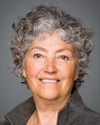Madam Speaker, I am very pleased to speak today to Bill C-442. I am very happy with the resolution of the bill thus far, although there have been some hiccups along the way. The last time I heard debate in this House on this particular bill, it was quite acrimonious, as I recall, but things seem to have calmed down.
At the outset, I want to give thanks to the Conservative MP for Edmonton—Sherwood Park. He is the sponsor of the bill and, having done this before, I know there is an awful lot of work involved in getting a bill like this together. I recognize that the original impetus for this started elsewhere, but he carried the ball and took it this far, through what we saw during the last go-round here. It is surprising that we are all still standing after the battles involving this bill.
In the beginning, we have Ms. Laura Grossman from Toronto, I believe, but who is a student here in Ottawa. She is actually the originator of the idea. She evidently went to her member of Parliament, who was in the cabinet of the government two or three years ago, and got him onside, and then of course he got the member for Edmonton—Sherwood Park onside, because he was unable to introduce private members' bills.
There is a great amount of thanks and gratitude owed to Ms. Grossman, because she is a younger person and is going to carry on the fights long after we are gone. She is a full-time student at the University of Ottawa, a fourth year honours student in public administration with a minor in Jewish studies, and she has been working on this idea now for at least two years, maybe three years now. Congratulations to her for at least recognizing something that no one else did. This memorial probably should have been built many years ago, and it took a young person to recognize the need, to think it through and to push the idea through her member of Parliament and on to another member of Parliament. We should all wish that more young people would be inspired to take on projects like that and drive ideas like that forward.
It has been mentioned by others here that Canada is the only allied nation without a Holocaust monument in its national capital, which also came as a bit of a surprise to me. The former member for Winnipeg North, in her speech to this bill on December 8, 2009, which goes to show how long we have been debating this bill, gave us a list of other memorials that exist around the world. She had indicated that there is a Holocaust museum in Jerusalem. There is the Anne Frank house in Amsterdam. I think we have all heard of Anne Frank. We certainly studied Anne Frank when we were in public school. There is the Auschwitz Jewish Centre in Poland, the Austrian Holocaust Memorial Service, the Beth Shalom Holocaust centre in England, the Holocaust Memorial Center in Budapest, the Cape Town Holocaust Centre in South Africa, the Dallas Holocaust Museum and Center for Education and Tolerance, the Forest of the Martyrs in Jerusalem, the Ghetto Fighters' House museum in Israel and the Holocaust project in Detroit. There are many other monuments to the Holocaust.
This is not a lengthy bill but there are some interesting provisions, and I think there was some confusion out there about the provisions of the bill. I had the privilege and pleasure of travelling to Israel. I am due for another visit, because it was in December of 1986, 24 years ago now. It was a very inspiring visit that I made there. I was there only a week.
I was amazed to see the progress made by Israel in turning deserts into productive lands and cultivating crops in the middle of the desert.
We had the privilege of visiting a kibbutz. We went to the Ein Gedi Spa, where I had my first sulphur and mud baths. I would recommend those to anybody who goes to Israel. Visiting Israel was a very inspiring experience, albeit 24 years ago.
With respect to the provisions Bill C-442, we are dealing now with the amended version. The bill is an act to establish a national holocaust monument. The preamble reads:
Whereas there is no public monument to honour all of the victims and Canadian survivors of the Holocaust in the National Capital Region;
Whereas Hitler’s plan to exterminate the Jews of Europe led to the murder of six million men, women and children;
Whereas the Nazis sought to eliminate vulnerable groups such as disabled persons, the Roma and homosexuals in their bid to establish the hegemony of the Aryan race;
Whereas it is important to ensure that the Holocaust continues to have a permanent place in our nation’s consciousness and memory;
Whereas we have an obligation to honour the memory of Holocaust victims as part of our collective resolve to never forget;
I might remind members that the number of victims is diminishing every year as they age. It continues:
Whereas the establishment of a national monument shall forever remind Canadians of one of the darkest chapters in human history and of the dangers of state-sanctioned hatred and anti-Semitism;
And whereas a national monument shall act as a tool to help future generations learn about the root causes of the Holocaust and its consequences in order to help prevent future acts of genocide;
The bill then goes on to describe how the monument would be structured and how it would be set up. What was contemplated by the member who sponsored the bill was that we were to set up a development council established by the minister under clause 4 and directed as such by the minister to form a legal entity in order to properly manage the functions and ensure good governance and accountability of said council.
The idea is to involve people in the community, not only in the organization by forming the committee, but also to do fundraising, as I understand it, to help build the monument. Within one year after the coming into force of the act, the minister is to establish a council to be referred to as the national Holocaust monument development council, composed of not more than five members. The minister is to hold an open application process whereby members of the public who possess a strong interest in, connection to or familiarity with the Holocaust must apply to the minister to become a council member.
In reading these provisions, all of this sounds very reasonable. How could anybody have any fight with these provisions? Yet we have seen that happen.
The members of the council are not allowed to be paid any remuneration for acting as council members. The minister is also supposed to:
(a) oversee the planning and design of the Monument;
(b) choose a suitable area of public land in the National Capital Region for the Monument to be located; and
(c) hold public consultations and take into account the recommendations of the public when making any decision under paragraph (a) or (b).
That, too, is an absolutely reasonable requirement.
The minister shall be responsible for the construction and maintenance of the monument and the council shall spearhead a fundraising campaign to support the costs, planning, designing, constructing, installing and maintaining the monument and any other costs incurred by the council.
I have a question about that. There seems to be a conflict here because it said that the council should be spearheading the fundraising campaign, but then, further on, it indicates that the minister has the option. There is nothing to prevent the minister from contributing funds for the costs of exactly the same things, planning—








